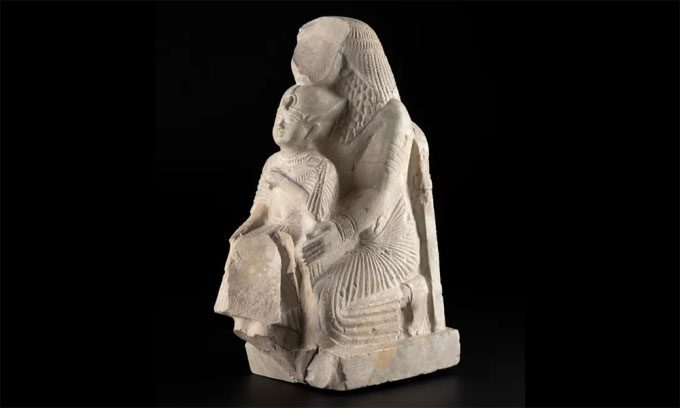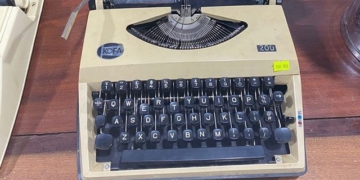A new study may reveal the identity of a pharaoh and a non-royal individual depicted in a mysterious statue unearthed in the 1850s.
In ancient Egyptian sculptures, pharaohs are typically not depicted alongside non-royals. Margaret Maitland, the principal curator of ancient Mediterranean cultures at the National Museum of Scotland, notes in a newly published study in the book “Deir el-Medina: Through the Kaleidoscope.”

Ancient Egyptian artwork depicting a man holding a statue of the pharaoh. (Photo: National Museum of Scotland)
However, a piece of artwork preserved at the National Museum of Scotland deviates from this norm, as reported by Live Science on April 28. The limestone statue is deemed “impossible,” showing a pharaoh seated in the lap of a kneeling figure. The pharaoh is not carved to life-size and wears a blue crown with a serpent atop it.
Upon reviewing the documentation, Maitland found that the statue was excavated by a research team led by the Scottish archaeologist Alexander Henry Rhind at Deir el-Medina in the 1850s. She also discovered that several high-ranking individuals at Deir el-Medina were permitted to depict the pharaoh in ways that others could not.
During the reign of Ramesses II (circa 1279 – 1213 BCE), a cult devoted to the king’s statues thrived at Deir el-Medina. The veneration and creation of statues depicting the pharaoh were encouraged by the royal family. Although the Egyptians generally did not endorse the depiction of pharaohs alongside non-royals, this specific time and place accepted such representations.
Maitland suggests that the piece housed in the National Museum of Scotland likely depicts a statue of pharaoh Ramesses II rather than a real person. The kneeling figure behind him may be Ramose, a senior scribe.
According to Maitland, there is a significant clue indicating Ramose’s identity: the kneeling figure is wearing a garland, a rare item for men in ancient Egypt. However, there is also a wooden statue at Deir el-Medina depicting Ramose wearing a garland.


















































